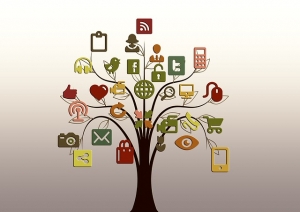
The Internet of Things (IoT) is alive and well in cities from Dallas, Texas, to Leeds, England. Singapore is said to be one of the very smartest among cities earning designation as a “smart city” when it comes to IoT technology solutions. The U.S., unfortunately, is not the global leader when it comes to the use of IoT technology. Cities, however, are among the greatest “first adopters” in America.
Since the IoT is being referred to as the third wave in the development of the Internet and the marketplace is growing so fast, it is impossible to project the eventual size and impact. It is obvious though that average citizens need to understand the IoT a little better. A simple explanation is that the Internet of Things is the interworking of devices, vehicles, buildings and other diverse items that are connected remotely for data exchange and analysis. The result is more efficiency in problem solving and creating economic benefit.
Taxpayers are paying for IoT solutions. Public officials have found that the technology offers ways to reduce costs, plan more efficiently, ensure public safety and move transportation with less congestion.
 One recent report estimates that there will be 34 billion devices connected to the Internet by 2020. However, there are dozens of other projections that say there will be anywhere from 50 billion to 1 trillion devices connected to the Internet by 2020. Revenue from IoT solutions will likely be at least $6 trillion over the next five years. That’s pretty staggering data!
One recent report estimates that there will be 34 billion devices connected to the Internet by 2020. However, there are dozens of other projections that say there will be anywhere from 50 billion to 1 trillion devices connected to the Internet by 2020. Revenue from IoT solutions will likely be at least $6 trillion over the next five years. That’s pretty staggering data!
Most of the new IoT technology being used by cities is data-driven and it involves the Internet and cloud storage. Some of the buzz words that appear daily in media articles about the IoT refer to smart grids, smart homes, intelligent transportation and smart cities. But what does that really mean?
One way to think about the IoT is to picture sensors that, once attached, are able to relay data to a common repository. There the data can be analyzed and used with great efficiency to solve problems.
IoT technology is used for transportation planning, air quality monitoring and control, public safety and public health. It can also be used for things like management of public parking spaces, water leak detection, smart grids and automated and enhanced transit services. IoT technology is also being used in some waste disposal systems and it is a part of everything related to autonomous vehicles. The uses are almost limitless and cities throughout the world are racing to be leaders in launching new IoT projects. Cities are alone, however, in this competitive space. Universities, hospitals, clinics and research centers all use IoT technology in dozens of ways that are astounding.
There is no doubt that life for citizens throughout the world is changing quickly because of IoT technology. Transportation will never be the same and health care, public safety, environmental sustainability, power generation, water conservation and dozens of other critical areas that impact the lives of citizens will never be the same. It’s definitely time to comprehensively understand as much as possible about the Internet of Things.
Want to read more stories like this one? Check out the most recent editions of Government Contracting Pipeline and Texas Government Insider. SPI’s government contracting consultants assist firms of all types in selling to government. Contact them today.
